Borderlands 4 launches in less than three months and we had a chance to play more than two hours of it, trying out the new open, sorry, seamless world and how the new traversal mechanics will affect gameplay and boss fights.
Later, we had the pleasure of sitting down with Chris Brock, executive producer, and Taylor Clark, senior writer, who told us more about the game’s innovations, how they think it will be a bigger evolution than Borderlands 3, and how they’ve fine-tuned the writing and humor in this chapter…
Gamereactor: Did Borderlands 4 have the longest development period in the series?
Chris Brock: It depends on what you mean by starting development. We tend to start talking about what we’re going to do for the next game before the current game is over. We start with early meetings, then we go to pre-production. That was around 2020, after Borderlands 3, and it’s been pretty heavy production for about three years. It depends on your definition. Borderlands 3 was pretty close. About five years of development.
GR: Was there anything in Borderlands 4 that you couldn’t have done on PS4 or earlier consoles?
CB: I don’t think the world we created would have worked. The seamless world. We started out making a game with open-world elements, but we didn’t want a full open world. We didn’t necessarily want to do all the things that open worlds do. We wanted to do the things we liked about open-world games.
GR: So I understand you don’t like to call it an open world. Do you prefer other terms?
CB: No, I don’t like it. I prefer the term seamless. The key is that you are not locked out. You can start at the Fadefields and travel all the way to the mountains, and go back to other areas we haven’t talked about yet, and go back without really being blocked.
Taylor Clark: I think the difference for me is that we didn’t want the baggage that comes with the term open world, like the idea of craft. Everything in Borderlands 4, the vast majority of what you interact with, is custom, largely story-based content. Why do I keep using the word content? (laughs) But that’s most of what you go through. Not things that are there for the sake of it, or to trick and manipulate you into staying in the world.
GR: So even if the game wants the player to have more choice to explore the world, will it still be story-oriented?
We have more missions than ever, they’re more diverse than ever, with more different tones than ever. But I think the magic of Borderlands is that everyone approaches it differently. For some, the main story is what they’re interested in, and then cut there. For some, they want to be completionists, and for others, the end game is when the game really starts. So I think there are a lot of options for people in terms of how they want to engage.
GR: Even if it uses elements from the previous Borderlands games in the story, will it be accessible for new players to start in Borderlands 4 ?
TC: Both, actually. It doesn’t leave the whole series behind and start over. At the end of Borderlands 3, we see Lilith warping Elpis’ moon and sacrificing herself, and it all disappears. The question at the end of Borderlands 3 was, what happened to her? In Borderlands 4, in the first trailer released, we see the beginning of the answer to that question. The moon comes through the veil of Kairos and reflects as the thing that keeps people inside and the rest of the universe from seeing Kairos.
So the planet is new, and everyone, from all the Vault Hunters and all our returning characters are experiencing Kairos for the first time, so we’re all learning about it together. So in that sense, it’s a great new start for players, you don’t need to know anything to understand Kairos and everything that’s going on, but the people who have invested in that story and what happened to the moon and to Lilith will see their experiences enriched, by having that layer on top of it, if that makes sense.
GR: This game is being released on Switch 2. Was it easier to develop it on Switch 2 than to develop Borderlands 3 and the others on Switch 1?
CB: Yes, yes. The Switch 2 was an easier platform to develop on than the Switch 1. That’s not to say that the Switch 1 was super difficult to develop, but the Switch 2 is more like what we’re used to developing on. I’ll leave it at that.
GR: Would you say it’s on the same level with PS5 and Xbox Series X or more in the middle?
CB: It’s hard to say for sure. It’s powerful enough to develop Borderlands 4 and look great. I can’t give you more details.
GR: Some of the previous games in the series have been criticized for not innovating enough. Did you somehow respond to that in Borderlands 4?
CB: That’s a good question. The time between Borderlands 2 and Borderlands 3 was about seven years. We had been away for a while. We wanted to make sure it was familiar when we came back. When people say it feels like more Borderlands, yes, that was the goal. We wanted to make more Borderlands. We wanted to evolve, but we didn’t want to change the formula so much that it didn’t feel familiar.
But from Borderlands 3 to Borderlands 4, one of the things we wanted to focus on was traversal skills and exploration. And that led to the series, I would say, evolving more between 3 and 4 than between 2 and 3, for sure.
GR: We have four new playable characters. Who is your favorite character? In terms of story and gameplay.
TC: It’s like asking your favorite child. I would say, uniquely in this case, normally when you write for a group of characters like that, you have your favorite character, and someone you don’t like as much. That didn’t apply to me, and I think to the other people on the storytelling team.
We enjoy writing for all the characters, we love their voices, and we feel super connected to all of them. So I go back to what I plan to play as a person.
CB: I won’t say favorite, but for every Borderlands game there is one character during development that I try to play less than the others. So that I can have a new experience when the game is finished. This time, it’s Harlowe the Gravitar. I said, I’m going to play her as little as possible while still being responsible. And when the game comes out, I’m going to play it at home with Harlowe. So I will say Harlowe.
TC: I’m torn between Harlowe and Amon. They are very different people, with very different playing styles.
CB: Vex is great. Obviously, when we make a game, we have to start with a Vault Hunter. We have to start with one of them. And Vex was the first one we did. So I think we’ve played a lot of Vex so far.
GR: You say you want the humor to be a little different, drier and grounded. Is that in response to some feedback from the previous games? Or did you want to make the series more mature?
TC: Yes, of course. It comes from different places. Of course we listen to feedback and value feedback and take it seriously. Especially people bring up great points. And it would be crazy if we didn’t take it to heart. But at the same time, the most important thing for us is to have a tone that feels like it makes sense in the world we’re building and in the story we’re trying to tell.
On Pandora, as in the Wild West, the shotgun approach made sense. Because this was a world where anything goes. A world where everything tried to kill you and businesses tried to cut each other’s throats. And Handsome Jack was always looking at you and talking shit to you. The slightly meaner tone made sense in that world. On a totalitarian, dictatorial planet ruled by this person with an iron fist, it makes less sense.
It makes less sense to have such a tone. It would not feel appropriate (like firing jokes out of a T-shirt gun) when we are in a terribly oppressed world. We were trying to find the humor. It wouldn’t be a Borderlands game without humor. So to find that tone in the world, between the characters, you have to find the humor and not try to pull it from outside, like pop culture references or things like that.
Don’t miss our full preview of Borderlands 4 here, ahead of the game’s launch on Sept. 12, 2025.
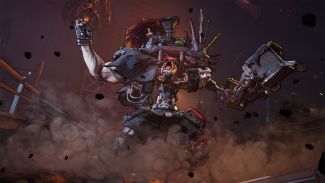
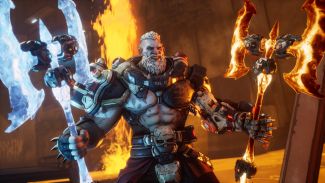
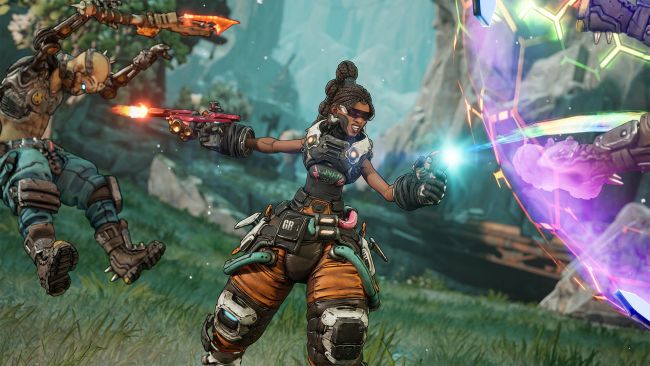
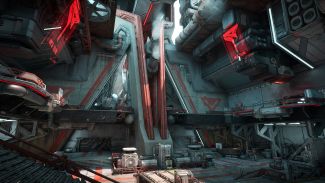
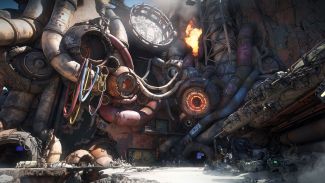



 Screen time – October 2025 –
Screen time – October 2025 –